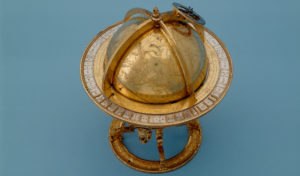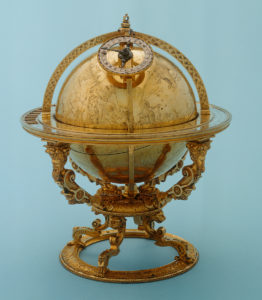
An ingenious timekeeper
As everyone knows, 29 February is a leap day and appears on the calendar only once every four years. The day was introduced in 1582 by Pope Gregory XIII. The new Gregorian calendar finally did justice to the fact that a year has 365.2425 days. Only four years later, Jost Bürgi, a brilliant astronomer, mathematician, clockmaker, and maker of astronomical instruments, built a celestial globe incorporating the new calendar for the German Kaiser. He developed the firstever mechanical system to display 29 February in leap years. Bürgi was born in what is today the canton of St.Gallen and worked with the famous astronomer Johannes Kepler at the imperial court in Prague.
In addition to the celestial globe, he also invented many other things. He was the first person to draw up a logarithmic table. Additionally, he built a clock with three hands, thereby creating the second as a unit of time.

Celestial globe, made by Jost Bürgi in 1594. Photo: Swiss National Museum



